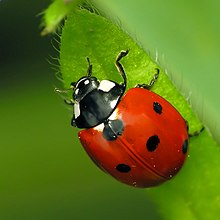1. Archaebacteria – Staphylothermus marinus and Methanosarcina rumen
Both of these Archebacteria are prokaryotes, also known as having no cell nucleus.
2. Eubacteria – E. coli and Streptococcus
These Eubacteria areusually a couple micrometres in length and come in many different shapes and sizes. They are complex and single celles, and are found everywhere.
3. Protists – Giant Kelp and Paramecium
Both of these protists are one-felled organisms and have diverse “reproductive and nutritional modes.”
4. Fungi – Amanita rubescen and Rhizopus stolonifer
These Eukaryotic fungi live by decomposing and absorbing organic material.
5. Animalia – Coccinella septempunctata and Pterophyllum altum
Animalia meaning the highest taxonomic group where all living or extinct animals are included in.


6. Plantae – Vaccinium macrocarpon (cranberry) and Opuntia phaeacantha (desert prickly pear)
These are multicellular and are eukaryotes.
Sources: classificationofthekindoms.weebly.com
https://microbewiki.kenyon.edu/index.php/Halophiles
https://kingdomsoflifecarrier.weebly.com/eubacteria.html









